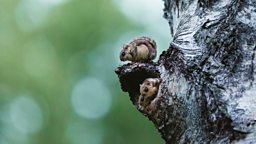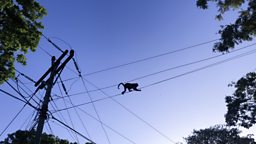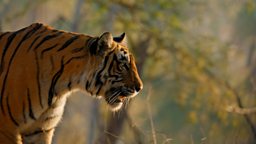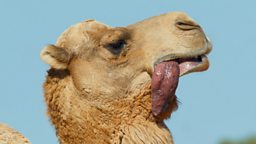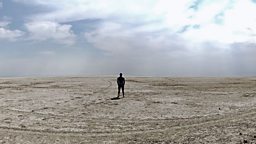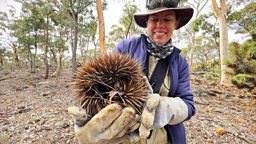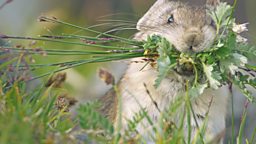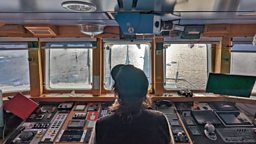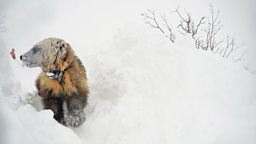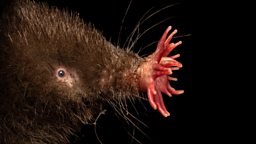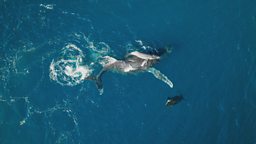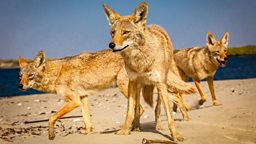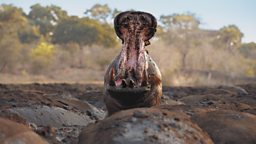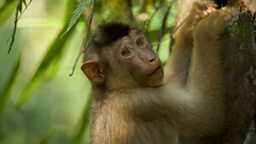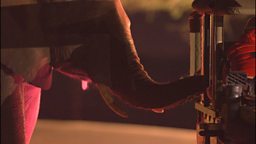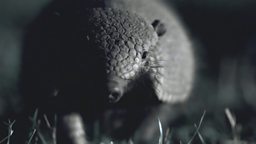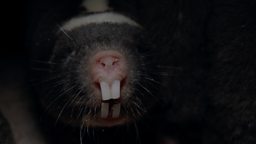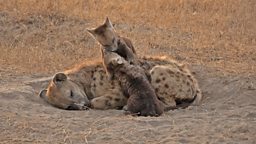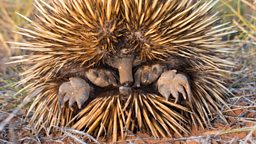Seeing a softer side to hyenas
By Mammals Assistant Producer, Harriet Lawrence
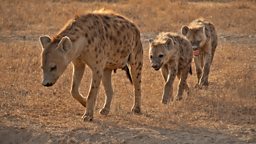
Have you ever thought about what it would be like to be part of a fierce pack, a strike team, a clan? Racing under a moonlit sky shoulder to shoulder with your team?
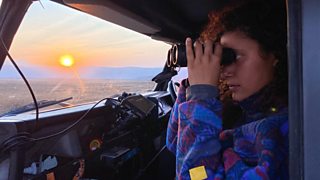
How about being part of a big family, surrounded by aunties and energetic toddlers? Someone always at home waiting to greet you?
Spotted hyenas get a bad rep. They are the infamous villains of the animal kingdom, a trope reinforced in films and stories worldwide. In some cultures, they’re considered graverobbers, bad omens and the servants of witches. You might have heard that they’re scavengers and cowards. In the UK, I grew up associating them with the sneaky, cruel and simpering henchmen of Disney’s Lion King. Though it might not shock you to learn that most of this isn’t true; what about learning that hyenas are inquisitive, playful, intelligent, and funny? They’re unbelievably social, chatty and hands down among the most impressive and determined hunters I’ve ever seen. Sometimes they’re even cute.
We had travelled to the Ngorogoro Crater, Tanzania and as our vehicle crested the rim and we got our first glimpse, it took my breath away. An unimaginably surreal landscape, and so vast my mind couldn’t comprehend that this was a caldera, once part of an enormous active volcano. We took some obligatory photos at the viewpoint and headed to a campsite on the rim of the crater – our home for the next 5 weeks.
Our mission was to film hyenas using their amazing communication skills to master the night. Despite its resident lions, we had heard that hyenas ruled the crater. This was a place where they shed the reputation of scavenger and became the true apex predator.

I was excited to be filming hyenas, spending countless hours in the heart of a wild place under a mind-blowing night sky filled to the brim with stars. Relying on our hearing and of course on our specialist filming equipment because we could rarely see much beyond our arm’s reach without it.
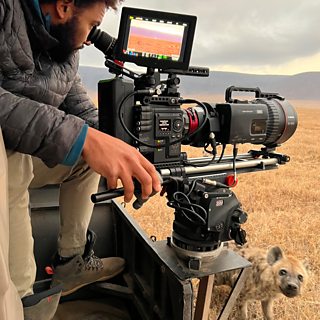
It didn’t take long to spot our first hyena. Less than 5 minutes after reaching the crater floor a sentinel stood watching from a nearby rise before trotting away – probably to tell the others about our arrival. The Crater hyenas live in rival groups known as clans, and each of the 8 clans dominates a distinct, but overlapping, territory on the Crater floor. Around 400 hyenas make their home in the crater, and the largest clan holds more than 90 individuals.
Our guide Philemon, a local researcher dedicated to following the hyena’s daily routines, led us to the largest den in the crater - home of the Airstrip clan. We were greeted by the curious looks and giggles of a dozen hyenas, and after waiting quietly for a few moments, a flurry of wriggling cubs came scampering out of a den. Some of the cubs were only a few weeks old, their dark brown bodies devoid of any spots yet. They looked like very excitable puppies, wiggling so hard their whole bodies were shaking. Watching the pups play with their mother and babysitters, I was struck by how affectionate the females were, playing, calling and nuzzling the young hyenas constantly. The noise of the den was full of hyenas communicating with one another, chatting away like a noisy family gathering.
Jo Haley – Director
"The thing I loved most about filming in Ngorongoro was the sessions at the den. We got to see a much softer side to hyenas than people usually see - tender moments between Mums and babies, cubs playing together and clan bonding. They are really caring and gentle mothers, while being strong female leaders - the ultimate boss women! The cubs were also really curious and some bold ones would come up to the car and start chewing on our equipment. They were just like naughty toddlers. Seeing this side to them made me really fall in love with them - the coolest underdogs of the animal world."
During the day, the Crater floor is filled with life and colour, surrounded by the surreal towering wall of the crater edge in every direction. But at night our surroundings were transformed. The Crater became an indistinguishable blackness – filled with a vast silence that was only broken by alien calls – the whoops of hyenas on the hunt. Try to imagine something between a howl and a whooping fan at a concert. Now imagine that strange sound can travel over kilometres.

Recent research has suggested that hyena clan-mates might be able to recognise each other’s voices across vast distances. Not only a few voices, but potentially remembering and recognizing over a hundred individuals from their voice alone.
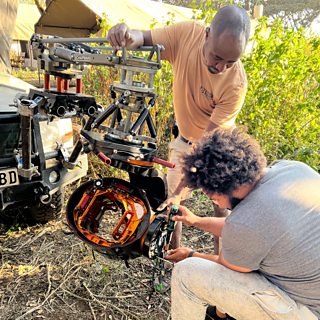
We spent countless hours sitting in that pitch darkness, using thermal scopes to search for signs of activity. While making the Dark episode I had spent hundreds of nights in a similar fashion, but nowhere did the night feel as wild and suspenseful as there.
Hyenas are much bolder in the dark. They come closer to you and they aren’t so disturbed by your presence. We were in their world now, they knew they had the upper hand, and it gave them confidence. Hyenas would appear suddenly out of the gloom less than a metre away, close enough to reach out and touch them. The young ones loved to chew the tyres and metal of the car. Our guide said it might feel good in their teeth, something fun and new.
Jo Haley – Director
"Working at night has its challenges... especially when you can't see a huge aardvark hole right by your car wheel! We remove the car door for filming, which felt less than ideal when we got stuck metres from a pride of lions! Luckily, as they were on a kill, they were pretty distracted, although I also knew this meant they would be here for a while. It felt like it was going to be a long old night... then luckily our driver Dennis managed to get the vehicle free."
After spending a few nights with the hyenas, it quickly became apparent that this clan were no simple scavengers. It’s true that hyenas will never pass up an easy meal. However, they’re also perfectly adapted for endurance hunting, able to maintain a top speed of 65kmph over long distances. It’s this relentless chase that wears down their prey to the point of exhaustion, and the hyenas seem to relish in it.
Luke Barnett – Camera Operator
“More often it was a 'Whoop' from miles away that hinted at action. A head down drop of sound from a hyena calling into the night. Like a pebble dropped in a pool, the cry would ripple out across the crater to the hyena clans. A scan with the thermal camera could then show the reaction as hyenas would race from dens on dusty trails. Time to join forces. It could be a hunt, a chance to push lions off a kill or a rival clan battle, but never dull.”

Suddenly tiny hot figures were running across the black and white screen, and we knew something big was going down. A frantic radio call from the other half of our team confirmed our suspicions and we raced down the hill towards the action. As we got closer, we started seeing hyenas running alongside our car, alone or in small scouting parties, headed the same way. They glanced at us without breaking their stride before returning their attention to the race.
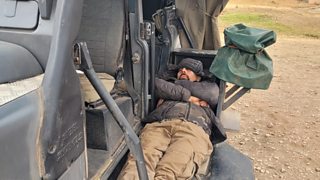
As we crested a steep rise we spotted their quarry. To our surprise it wasn’t an antelope or a wildebeest – common prey for adult hyenas – but the imposing figure of an adult buffalo. A big bull, swiping at the approaching hyenas with its curved horns, and other hyenas already hanging on to the back of it trying to wear it down. A buffalo is 10 times the size of a hyena. My mouth fell open with shock.
The sound of a squealing giggle close by and it suddenly dawned on me that hyenas were streaming in from all sides, racing past our car to join the melee. We followed them as the chase moved off and so continued one of the most intense and exhilarating hours of my life. The terrain was rough and littered with holes, and we needed to keep our headlights off as much as possible to avoid disturbing the hunt. Thankfully our expert drivers Baz and Denis were total pros, weaving through the darkness like we were driving under the glaring midday sun, not through the changing shadows of a cloudy moonlit night with frantic hyenas appearing on all sides. Quick directions flew over the radio, and white knuckles gripped handles and steering wheels. The sound was immense. We were running with the clan.
Later, as we drove back through the night, I reached into my pocket and pulled out my phone. Hitting play on the audio recording I’d made during the hunt, I stared up in amazement at the brilliant night sky and listening to the echoing calls I tried to burn the memory deep into my mind forever.
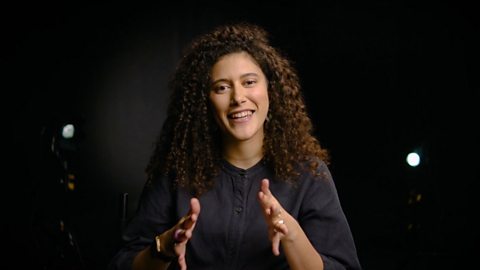
Behind the scenes - Filming hyenas in the dark
Assistant producer for Mammals Harry Lawrence, on the challenges of filming in the dark

